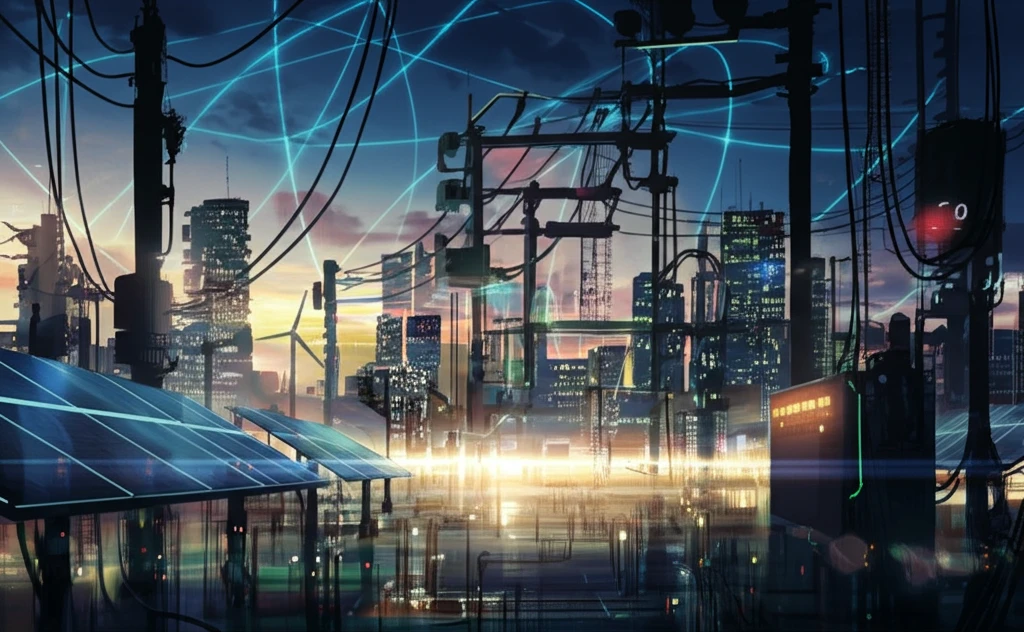
Power Up Your Future: How Advanced Energy Conversion Can Save the Planet and Your Wallet
"Explore the cutting-edge technology of high-frequency link DC/AC converters and their vital role in renewable energy integration for a sustainable and cost-effective future."
The growing urgency to combat climate change and pollution, driven by increasing energy demand and population growth, has led to a significant push for integrating renewable energy sources into our power grids. Microgrids are emerging as crucial components of more complex “Smart Grids,” designed to complement traditional fossil fuel-based energy production. However, renewable energy sources like solar photovoltaics and wind energy pose unique challenges due to their intermittent nature, requiring innovative solutions to ensure grid stability, power quality, and efficient energy management.
Power electronics converters are at the heart of this energy revolution. These devices are essential for integrating and managing renewable resources within existing electrical networks, offering key advantages such as high reliability, efficiency, and power density. In many cases, galvanic isolation from the grid is a legal requirement, often achieved through either low or high-frequency transformers. High-frequency link grid-connected converters (HFLGCC) are gaining traction due to their ability to enhance power density and efficiency without compromising cost and reliability.
One particularly effective HFLGCC configuration for integrating DC sources is the DC/DC + DC/AC setup. This design uses a Dual-Active-Bridge (DAB) converter to provide isolation through a high-frequency transformer (HF-TX) and enable bidirectional power flow. The output DC level of the DAB is then processed by an inverter for seamless grid connection. While this approach is popular, it can suffer from redundant power processing stages, leading to increased system losses and component count.
Why Direct DC/AC Conversion is the Future of Renewable Energy

To overcome the drawbacks of traditional systems, a more direct energy processing path can be achieved through DC/AC schemes. By replacing the secondary winding stage with an AC/AC converter based on cycloconversion or a DAB-like power transference scheme, it’s possible to increase system integration and power density. This advancement allows for extending the topology to fully-isolated multiple port configurations, further enhancing efficiency and reducing complexity.
- Higher Efficiency: Direct DC/AC conversion reduces the number of energy processing stages, minimizing losses and maximizing overall efficiency.
- Increased Power Density: By streamlining the conversion process, these systems achieve higher power density, making them ideal for compact installations.
- Enhanced System Integration: The topology supports seamless integration with multiple renewable sources and grid connections.
- Cost-Effectiveness: Despite their advanced capabilities, these systems offer competitive cost structures due to reduced component counts and optimized performance.
The Future is Bright with Advanced Energy Conversion
The development and validation of full-order switched models and their corresponding time-continuous representations are crucial for advancing HFLGCC technology. These models enable the design of sophisticated control systems, optimizing performance and ensuring seamless integration with renewable energy sources. As we continue to push the boundaries of energy conversion, innovations like direct DC/AC schemes will play a vital role in creating a sustainable and efficient energy future.
